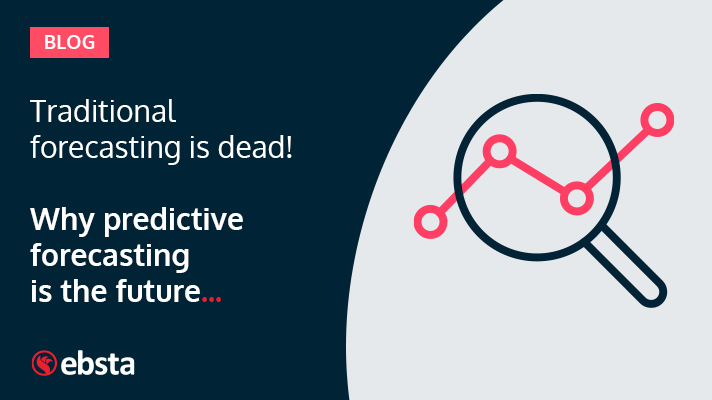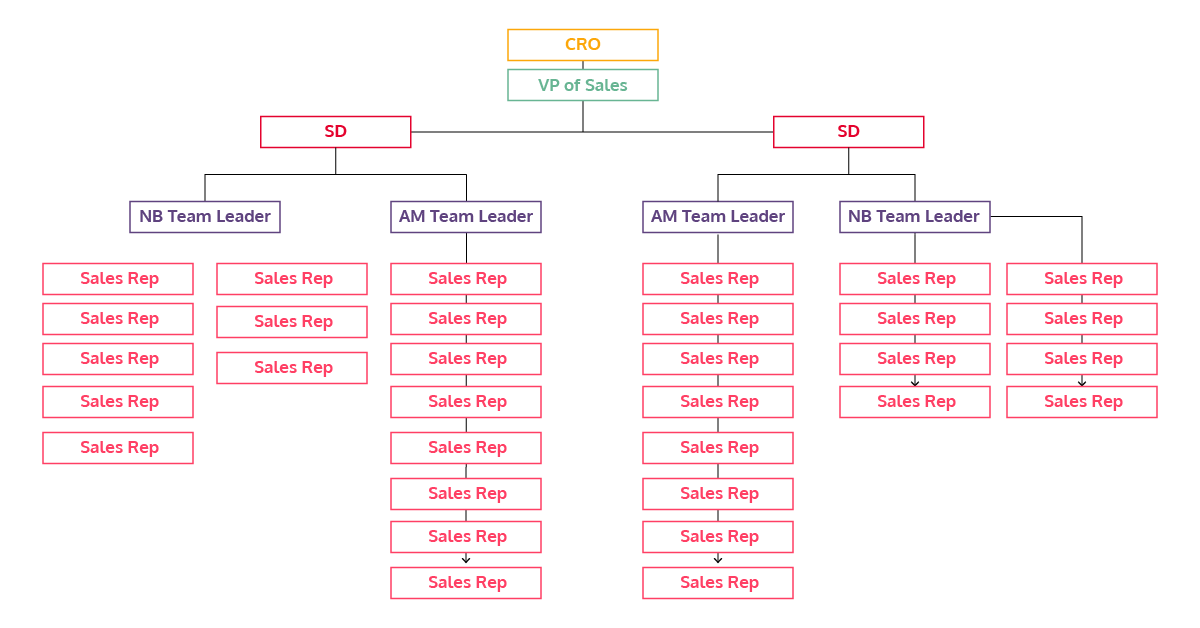Share this article
Learn from the brightest minds how to predictably and efficiently grow revenue.
Related Content
5 Ways to Use the Ebsta Integration With HubSpot to Improve Sales Performance
How to improve adoption of HubSpot with Ebsta
B2B Sales Benchmarks: 2023 H1 Update
The latest update from the 2023 B2B Sales Benchmarks analysis of over $37bn in pipeline.
How to improve AE quota attainment (according to data)
23% of reps are contributing 83% of revenue. Here's how to solve it (with data)

Traditional forecasting is dead! Why predictive forecasting is the future
Did you know 79% of sales organizations miss their sales forecast by more than 10%?
Everyone hates sales forecasting because it is impossible to get right.
We want accurate forecasts that we can rely on.
Cue – predictive forecasting!
Before we get into the juicy details of predictive forecasting, here is why you need to ditch your outdated forecasting model:

Traditional forecasting methods are much like a game of Chinese whispers…
PHASE 1
Sales reps report their own numbers to their managers.
If you have 30 sales reps on your team and you conduct 1-hour pipeline reviews with each of them, that is 30 hours or 4 days of lost time.
Motivated by commission, reps minimize their own risk by lowballing high-value deals.
This is where the first whisper is lost in translation and ultimately contributes to the inaccuracy of the final forecast.
PHASE 2
Sales managers compile these forecasts to create team forecasts.
Large teams usually mean everyone has a different approach to their pipeline reviews.
4 team leaders = 4 different processes = Inconsistency!
Managers tend to make tweaks to the reps’ forecasts at this stage.
These tweaks, which may just be 1 or 2% off, lead to bigger inaccuracies as the forecast is passed onto C-level executives.
PHASE 3
Next up, team forecasts are evaluated by sales directors who challenge everything that is not the deal value.
They are pushing for the largest number possible.
The game of Chinese whispers continues…
This is called layering.
Sales directors promise to deliver more than what is committed by sales reps to C-suite executives.
HOPE IS NOT A STRATEGY!
The problem with layering is that these ‘layers’ are often not communicated back to the sales reps.
With no visibility on what has been promised, their targets for the month or quarter are not aligned with management.
PHASE 4
Next up, we have a VP of sales who is responsible for understanding and improving how everyone underneath them in the hierarchy is determining their forecasts.
PHASE 5
At the top of the hierarchy, we have a CRO who is responsible for allocating the budget based on these forecasts.
An inaccurate forecast results in the wrong business decisions being made.
All of these small inaccuracies at every phase add up to a forecast that is miles off from being accurate.
From start to finish this process is ineffective:
- Time-consuming – up to 4 days of time lost.
- Inconsistent – every sales leader has a different process for their pipeline reviews.
- Based on gut feeling – hope is not a strategy.
- Creates friction – no one enjoys pipeline reviews. Reps are defending their pipelines and more often than not leaders have not been trained for these meetings.
- High risk – real figures are lost in translation and not based on cold hard data.
What is predictive forecasting?
Predictive forecasting considers historical data with your open pipeline to provide you with an accurate forecast.
It looks at trends and fluctuations in data allowing you to easily identify new opportunities and spot risks in your pipeline in real-time.
Traditional forecasting does not factor in the likelihood of a deal closing. It is centered around gut feelings.
Predictive forecasting takes out the guesswork so you are no longer playing a game of Chinese whispers.
Your forecast is driven by data.
It employs the use of deal scoring which assigns a number between 1 and 100 of how likely a deal is to close by factoring in relationships, engagement, deal stage, close date, deal value and so much more to give you an accurate forecast that truly reflects the likelihood of a deal closing successfully.
Here are the phases with predictive forecasting:
PHASE 1
Sales reps and managers go into pipeline reviews better prepared.
Instead of asking questions on what reps have been working, managers can easily access this information.
All parties from sales reps to C-suite executives have access to the same data.
There is no longer room to hide or low-ball opportunities.
PHASE 2
Everyone across the board is operating using the same processes with predictive forecasting.
No more inconsistency!
It creates alignment between reps and managers through a repeatable process.
PHASE 3
With increased visibility, your forecast is safe from sales leaders layering it up.
Sales leaders will have all the data at their fingertips to make well informed and accurate sales forecast.
PHASE 4 & 5
Predictive forecasting encourages collaboration.
Everyone from the sales rep to the VP of sales and CRO are on the same page.
C-suite executives are left with actionable insights rather than just meaningless data.
This allows them to have confidence in their business decisions.
By removing inaccuracies at every phase, you will benefit from marginal gains.
That 1 or 2% adds up and results in a large increase in your forecasting accuracy.
These are the key differences between traditional forecasting vs. predictive forecasting:
- Time-efficient – predictive forecasting automatically updates so everyone from sales reps to sales leaders has access to the same data, in real-time, all the time.
- Builds trust through transparency – sales reps can no longer hide opportunities. Data from your CRM is automatically fed into the forecast.
- Robust and repeatable – all teams are operating using the same process.
- Data-driven – removes bias and provides sales leaders with an objective forecast and view of their pipeline.
- Collaborative – with the ability to easily spot opportunities at risk, sales leaders can approach reps with feedback and better support them to close more deals.
- Empowering sales reps – reps no longer have to defend their pipelines and can build better relationships with their sales leaders.
Not familiar with predictive forecasting? Learn more about how Ebsta accurately predicts your sales forecast here


